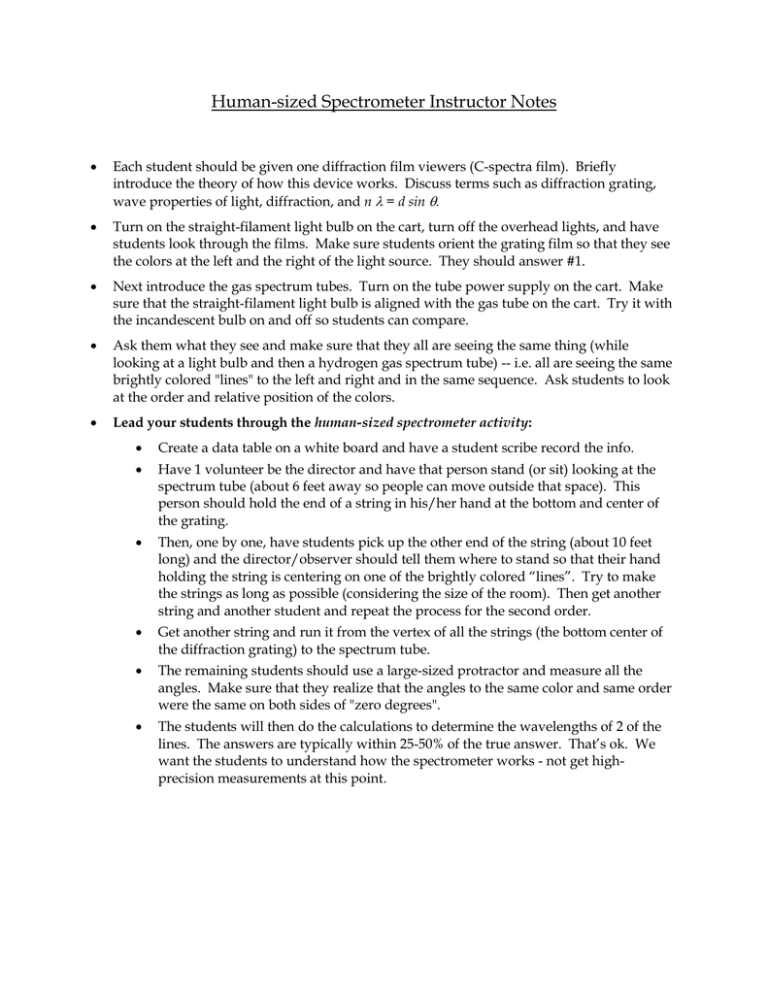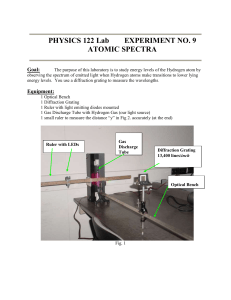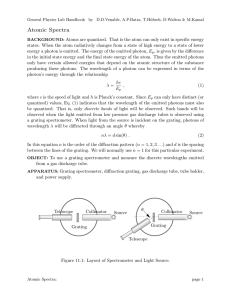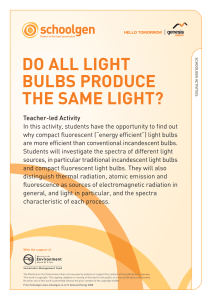Instructor
advertisement

Human-sized Spectrometer Instructor Notes Each student should be given one diffraction film viewers (C-spectra film). Briefly introduce the theory of how this device works. Discuss terms such as diffraction grating, wave properties of light, diffraction, and n = d sin . Turn on the straight-filament light bulb on the cart, turn off the overhead lights, and have students look through the films. Make sure students orient the grating film so that they see the colors at the left and the right of the light source. They should answer #1. Next introduce the gas spectrum tubes. Turn on the tube power supply on the cart. Make sure that the straight-filament light bulb is aligned with the gas tube on the cart. Try it with the incandescent bulb on and off so students can compare. Ask them what they see and make sure that they all are seeing the same thing (while looking at a light bulb and then a hydrogen gas spectrum tube) -- i.e. all are seeing the same brightly colored "lines" to the left and right and in the same sequence. Ask students to look at the order and relative position of the colors. Lead your students through the human-sized spectrometer activity: Create a data table on a white board and have a student scribe record the info. Have 1 volunteer be the director and have that person stand (or sit) looking at the spectrum tube (about 6 feet away so people can move outside that space). This person should hold the end of a string in his/her hand at the bottom and center of the grating. Then, one by one, have students pick up the other end of the string (about 10 feet long) and the director/observer should tell them where to stand so that their hand holding the string is centering on one of the brightly colored “lines”. Try to make the strings as long as possible (considering the size of the room). Then get another string and another student and repeat the process for the second order. Get another string and run it from the vertex of all the strings (the bottom center of the diffraction grating) to the spectrum tube. The remaining students should use a large-sized protractor and measure all the angles. Make sure that they realize that the angles to the same color and same order were the same on both sides of "zero degrees". The students will then do the calculations to determine the wavelengths of 2 of the lines. The answers are typically within 25-50% of the true answer. That’s ok. We want the students to understand how the spectrometer works - not get highprecision measurements at this point.







